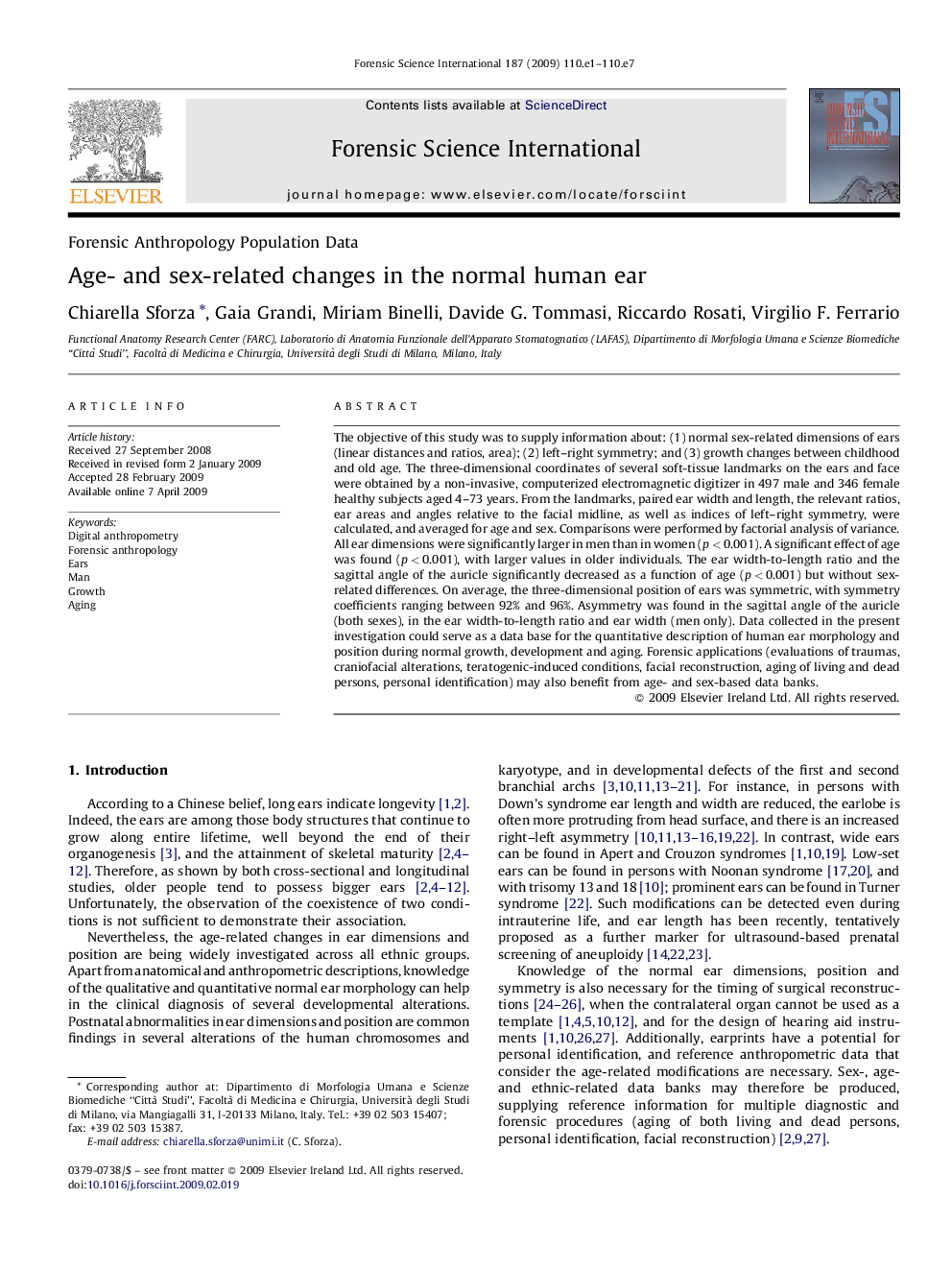| Article ID | Journal | Published Year | Pages | File Type |
|---|---|---|---|---|
| 97418 | Forensic Science International | 2009 | 7 Pages |
Abstract
The objective of this study was to supply information about: (1) normal sex-related dimensions of ears (linear distances and ratios, area); (2) left-right symmetry; and (3) growth changes between childhood and old age. The three-dimensional coordinates of several soft-tissue landmarks on the ears and face were obtained by a non-invasive, computerized electromagnetic digitizer in 497 male and 346 female healthy subjects aged 4-73 years. From the landmarks, paired ear width and length, the relevant ratios, ear areas and angles relative to the facial midline, as well as indices of left-right symmetry, were calculated, and averaged for age and sex. Comparisons were performed by factorial analysis of variance. All ear dimensions were significantly larger in men than in women (p < 0.001). A significant effect of age was found (p < 0.001), with larger values in older individuals. The ear width-to-length ratio and the sagittal angle of the auricle significantly decreased as a function of age (p < 0.001) but without sex-related differences. On average, the three-dimensional position of ears was symmetric, with symmetry coefficients ranging between 92% and 96%. Asymmetry was found in the sagittal angle of the auricle (both sexes), in the ear width-to-length ratio and ear width (men only). Data collected in the present investigation could serve as a data base for the quantitative description of human ear morphology and position during normal growth, development and aging. Forensic applications (evaluations of traumas, craniofacial alterations, teratogenic-induced conditions, facial reconstruction, aging of living and dead persons, personal identification) may also benefit from age- and sex-based data banks.
Related Topics
Physical Sciences and Engineering
Chemistry
Analytical Chemistry
Authors
Chiarella Sforza, Gaia Grandi, Miriam Binelli, Davide G. Tommasi, Riccardo Rosati, Virgilio F. Ferrario,
